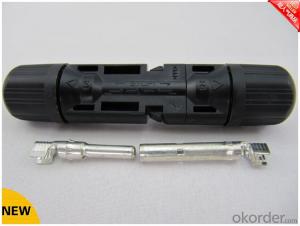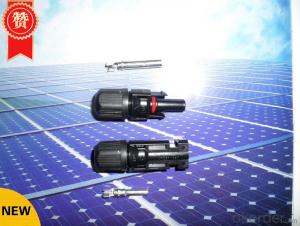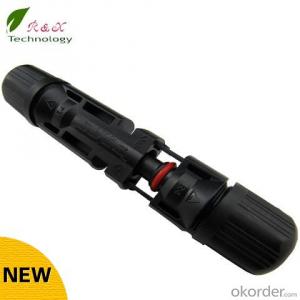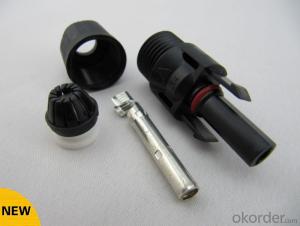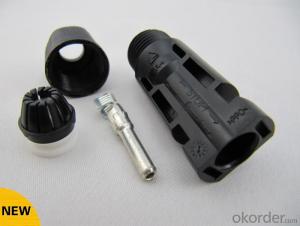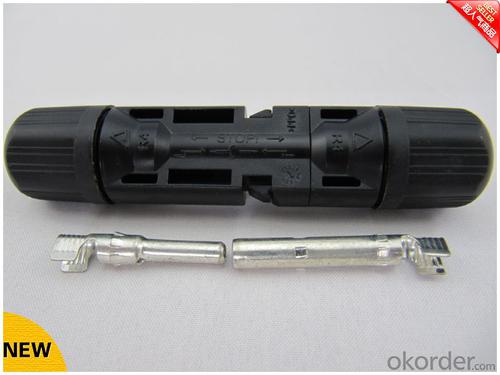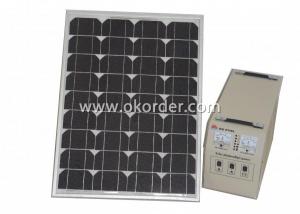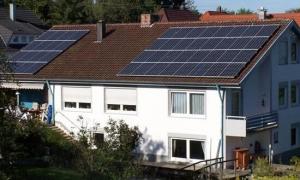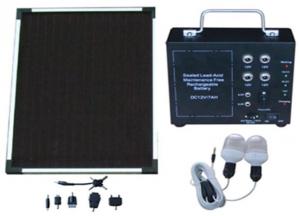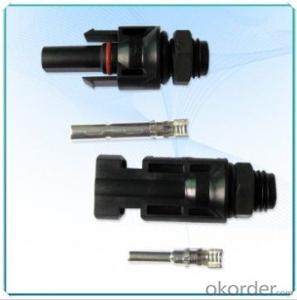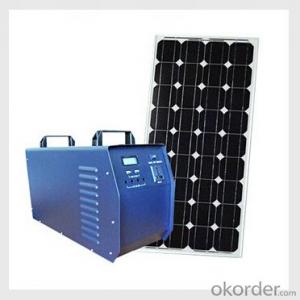Solar Energy Systems in Texas - MC4 Female/Male Can Contact 2.5/4/6mm2 Cable
- Loading Port:
- Guangzhou
- Payment Terms:
- TT OR LC
- Min Order Qty:
- 100 set
- Supply Capability:
- 100000 set/month
OKorder Service Pledge
OKorder Financial Service
You Might Also Like

Brief introductions of product:
Connector R4 System for photovoltaic adopts contact and insertion of reed with inner-knob type.It is used with male and famale points.pv junction box and cables made of elastomeric material and makes contact and isertion more certified by IEC61215 and TUV 2PFG1161.
Mainly parameters of product:
Rated voltage 1000V DC
Rated current 30A
Test volaage 6KV(50HZ,1min.)
Ambient temperaure range -40°C...+90°C
Upper limiting temperature 105°C
Degree of protection,mated IP67
unmated IP2X
Contact resistance of plug connectors 0.5m?
Safety class II
Contact system R4 Multilam
Type of termination Crimping
Contact material
Copper,tin plated
Locking system Snap-in(R4)
Cable type PV-F 1169 1*4mm2
1*6mm2
Design paper of product:
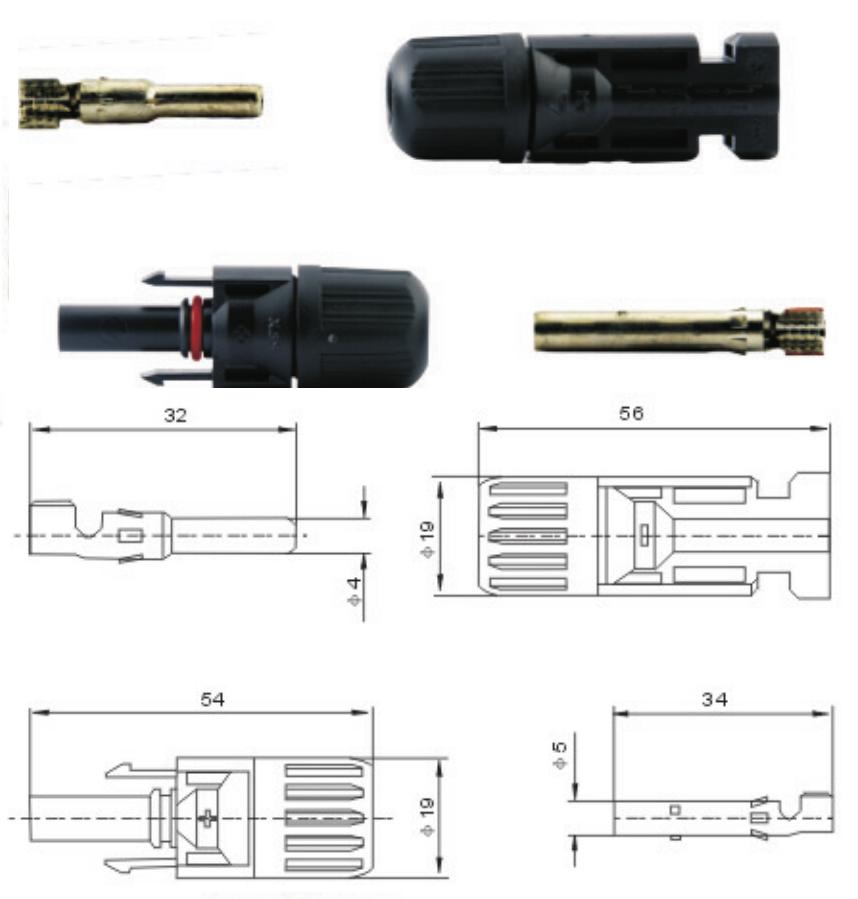
Way of product installation:
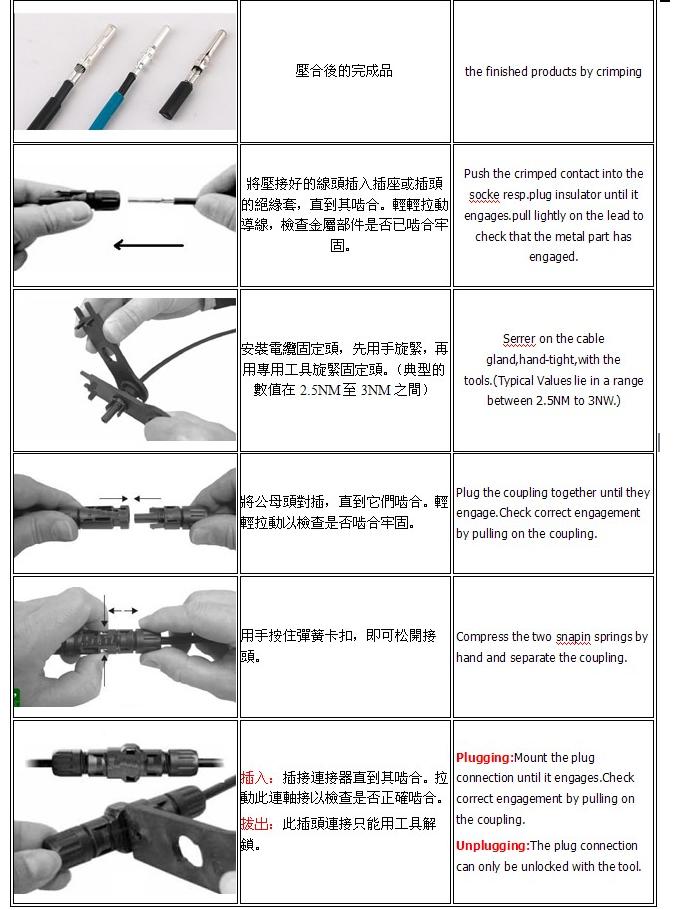
Quality inspection process:
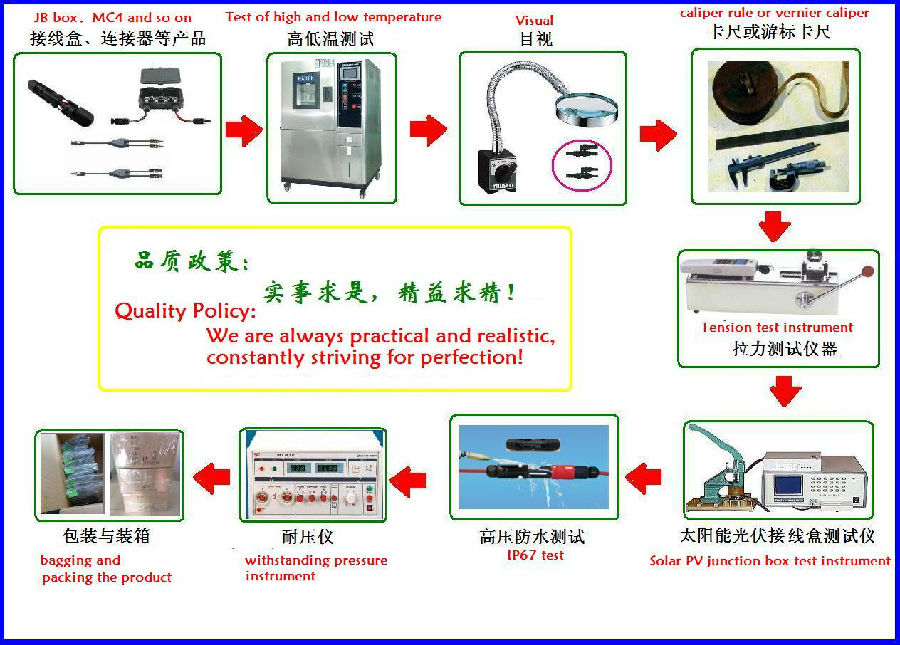
Application pictures of product:
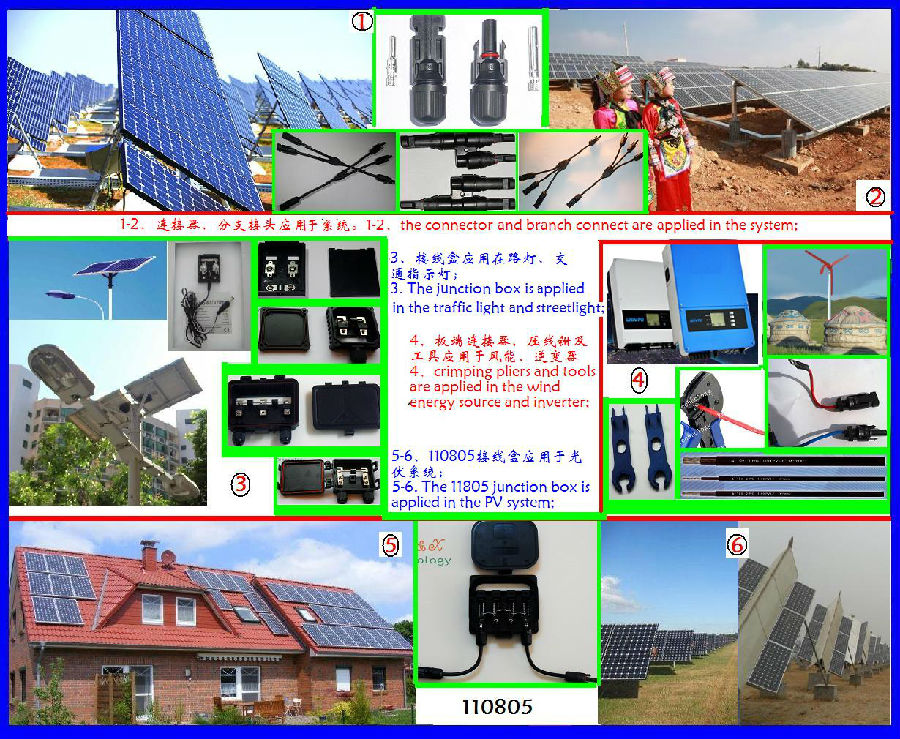
Machine equipment and production workshop:
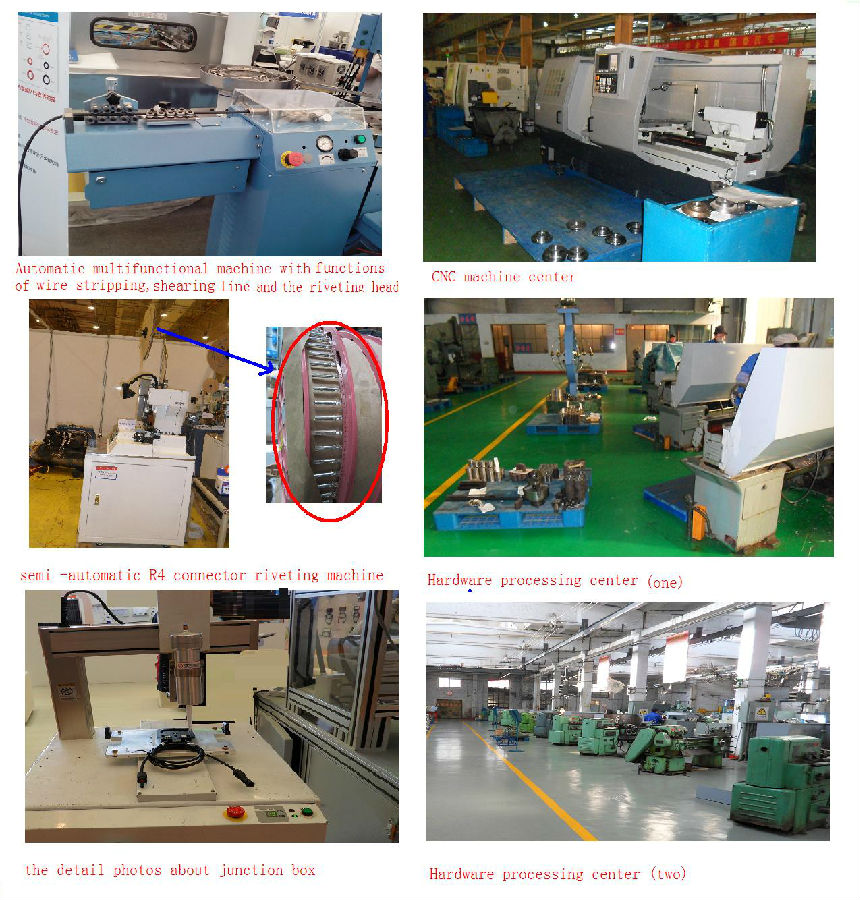
Pictures of discussing in the exhibition:
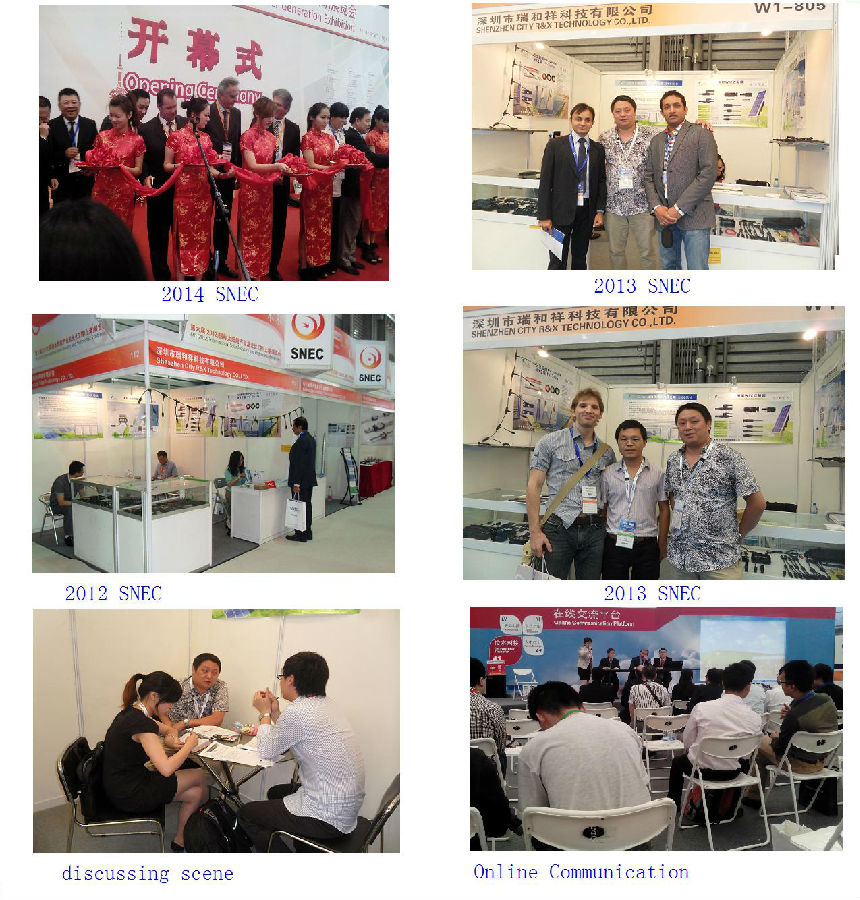
True application picture of the project:


Multi-Contact Multi-Contact Multi-Contact Multi-Contact Multi-Contact Multi-Contact
- Q: Can solar energy systems be used in areas with high wind conditions?
- Yes, solar energy systems can be used in areas with high wind conditions. While wind turbines are typically used to harness wind energy, solar panels can still be installed and function effectively in such areas. The performance of solar panels may be slightly impacted by the presence of wind, but with proper design and installation, they can still generate significant amounts of clean energy.
- Q: How does the installation of solar panels affect the building's aesthetics?
- The installation of solar panels can have a significant impact on the aesthetics of a building. Initially, the presence of solar panels on a rooftop or facade may alter the traditional appearance of the structure, which could be a concern for those who prioritize preserving the building's original design. However, modern advancements in solar panel technology have led to more aesthetically pleasing options that blend seamlessly with the building's architecture. Architects and designers are now working to integrate solar panels into the overall design of the building, making them less obtrusive. For instance, solar panels can be incorporated into the design of the roof, creating a sleek and uniform look. In some cases, solar panels can even enhance the visual appeal of a building, adding a contemporary and eco-friendly element to its appearance. Moreover, the color and material of solar panels have also evolved, allowing for a wider range of choices to match the building's style. Nowadays, solar panels are available in various colors, including black, blue, or even transparent, enabling them to blend in with the building's surroundings or become an elegant focal point. It is worth noting that the aesthetics of solar panel installations are subjective, and opinions may vary. Some individuals may embrace the modern and sustainable look that solar panels bring, while others may find them less appealing. Ultimately, the impact of solar panels on a building's aesthetics depends on the specific design, the preferences of the building owner, and the local regulations governing solar panel installations.
- Q: Can a solar energy system be integrated with other renewable energy sources?
- Yes, a solar energy system can be integrated with other renewable energy sources. This integration, often referred to as hybrid renewable energy systems, allows for a more reliable and efficient energy generation. By combining solar energy with other sources like wind, hydro, or geothermal, the system can compensate for fluctuations in generation and provide a consistent power supply. This integration helps maximize renewable energy utilization and promotes a sustainable energy mix.
- Q: Can solar energy systems be used in urban environments?
- Yes, solar energy systems can be used in urban environments. In fact, urban areas provide ample opportunities for solar energy adoption due to the availability of rooftops, facades, and open spaces for solar panel installations. Additionally, advancements in solar technology have made it possible to integrate solar panels into various urban infrastructure, such as streetlights and bus stops. These systems not only help reduce dependence on fossil fuels but also contribute to a cleaner and more sustainable energy future in urban areas.
- Q: Can solar energy systems be installed in urban areas with limited space?
- Yes, solar energy systems can be installed in urban areas with limited space. While it is true that urban areas often have limited rooftop space available for solar panel installation, there are several innovative solutions that can be implemented to overcome this challenge. One option is the installation of solar panels on vertical surfaces such as walls or facades of buildings. This approach maximizes the use of available space and does not require additional land. By utilizing vertical space, solar energy systems can still generate a significant amount of electricity even in densely populated urban areas. Another solution is the implementation of community solar projects. These projects involve the installation of solar panels in a centralized location within the urban area, such as a parking lot or a vacant lot. The electricity generated by these panels can then be shared among multiple buildings or households, allowing those with limited rooftop space to still benefit from solar energy. Furthermore, technological advancements have led to the development of more efficient and compact solar panels. These panels can generate the same amount of electricity as traditional panels with less surface area, making them more suitable for installation in limited urban spaces. In addition to these solutions, it is important to consider the potential for solar energy systems to be integrated into existing infrastructure. For example, solar panels can be installed on top of bus stops, streetlights, or even on the sides of bridges and highways. This allows for the utilization of spaces that would otherwise remain unused. Overall, while limited space may pose a challenge, there are various ways to install solar energy systems in urban areas. With innovative approaches and advancements in technology, solar power can be harnessed even in densely populated cities, contributing to a more sustainable and renewable energy future.
- Q: Can solar energy systems be used for powering streetlights or outdoor lighting?
- Yes, solar energy systems can definitely be used for powering streetlights or outdoor lighting. Solar-powered streetlights and outdoor lighting systems are becoming increasingly popular as they offer a sustainable and cost-effective solution. These systems harness energy from the sun during the day, store it in batteries, and then use it to power the lights at night. This reduces dependence on traditional electricity sources and helps in reducing carbon emissions, making it an environmentally friendly option for outdoor lighting.
- Q: Can a solar energy system be used in areas prone to hurricanes or tornadoes?
- Yes, solar energy systems can be used in areas prone to hurricanes or tornadoes. However, it is important to ensure proper installation and design to withstand severe weather conditions. This includes using hurricane-rated solar panels, reinforced mounting systems, and secure anchoring. Additionally, regular maintenance and inspections are crucial to identify any damages or issues caused by the extreme weather and ensure the system remains operational.
- Q: Are there any risks of electrical shock with solar energy systems?
- Yes, there are potential risks of electrical shock associated with solar energy systems. While solar energy systems are generally considered safe, the presence of high voltages and electrical currents within these systems can pose a risk if not properly managed or handled. Some of the key risks include: 1. Installation and maintenance: During the installation and maintenance of solar panels, there is a risk of coming into contact with live electrical components. This can occur if proper safety procedures are not followed, or if individuals without proper training attempt to handle electrical connections. 2. Faulty equipment or wiring: Malfunctioning or faulty equipment, such as inverters or wiring, can increase the risk of electrical shock. Poor installation practices or inadequate maintenance can also lead to electrical faults, which may expose individuals to dangerous electrical currents. 3. Fire hazards: Although not directly related to electrical shock, faulty electrical components or wiring can increase the risk of fire in solar energy systems. Fires can further exacerbate the risk of electrical shock if individuals attempt to extinguish them without shutting down the electrical system first. To mitigate these risks, it is crucial to follow proper installation and maintenance procedures, which often include working with a licensed professional. Additionally, individuals working with solar energy systems should be trained on proper safety protocols, such as wearing appropriate personal protective equipment and ensuring electrical systems are properly grounded. It is also important to regularly inspect and maintain solar energy systems to identify and address any potential electrical hazards.
- Q: How much energy can a solar energy system produce?
- The amount of energy that can be generated by a solar energy system relies on a variety of factors, including the system's size, efficiency, location, weather conditions, and available sunlight. On average, a typical solar energy system can produce between 1 and 10 kilowatt-hours (kWh) of electricity per day for every installed kilowatt (kW) of solar panels. To illustrate, a solar energy system with a capacity of 5 kW can generate approximately 5 to 50 kWh of electricity daily, which is typically sufficient to fulfill the energy needs of an average household. However, it is important to note that this energy production can fluctuate throughout the year due to seasonal changes in sunlight availability and weather conditions. Furthermore, advancements in solar technology and enhanced efficiency of solar panels have resulted in significant improvements in energy production. By utilizing high-performance solar panels and optimized system designs, it is possible to generate even greater amounts of electricity, thereby maximizing the energy output of a solar energy system. Moreover, any surplus energy generated by a solar energy system can be stored in batteries for future use or fed back into the power grid, depending on the specific setup and local regulations. This enables further utilization and optimization of solar energy production. Ultimately, the potential energy production of a solar energy system is a dynamic and customizable aspect that can be adjusted to meet individual energy requirements and objectives. Seeking guidance from a solar energy professional can provide more precise estimates and assist in designing a system that is best suited to specific needs.
- Q: Can solar energy systems be used to power remote locations?
- Solar energy systems are definitely capable of powering remote locations. In fact, they are particularly well-suited for such applications where access to the conventional power grid may be limited or non-existent. By installing solar panels in remote areas that receive sufficient sunlight, electricity can be generated even in off-grid locations. The typical solar energy system for remote locations consists of photovoltaic (PV) panels, which convert sunlight into electricity, and a battery storage system to store excess energy for use during non-sunlight hours. This ensures a reliable and continuous power supply, even in areas without grid access. Rural communities, remote research facilities, off-grid cabins, and telecommunications towers can greatly benefit from solar energy systems. They provide a sustainable and renewable source of energy, reducing dependence on fossil fuels and minimizing environmental impact. Furthermore, solar energy systems require minimal maintenance and are cost-effective in the long term, making them an ideal solution for powering remote locations.
Send your message to us
Solar Energy Systems in Texas - MC4 Female/Male Can Contact 2.5/4/6mm2 Cable
- Loading Port:
- Guangzhou
- Payment Terms:
- TT OR LC
- Min Order Qty:
- 100 set
- Supply Capability:
- 100000 set/month
OKorder Service Pledge
OKorder Financial Service
Similar products
Hot products
Hot Searches
Related keywords
